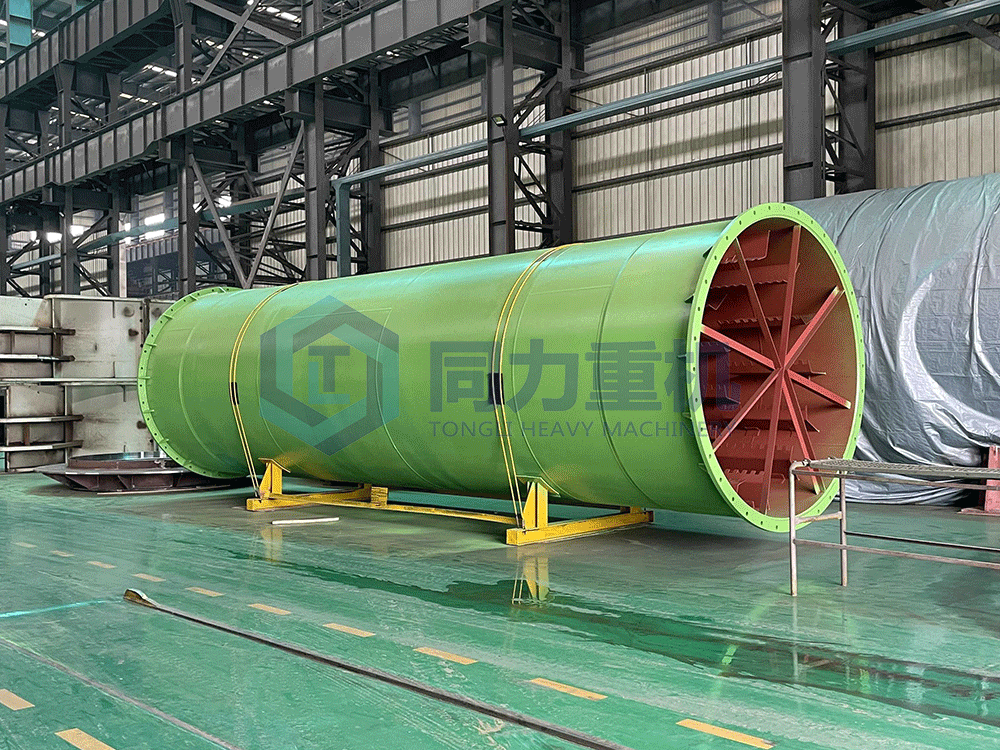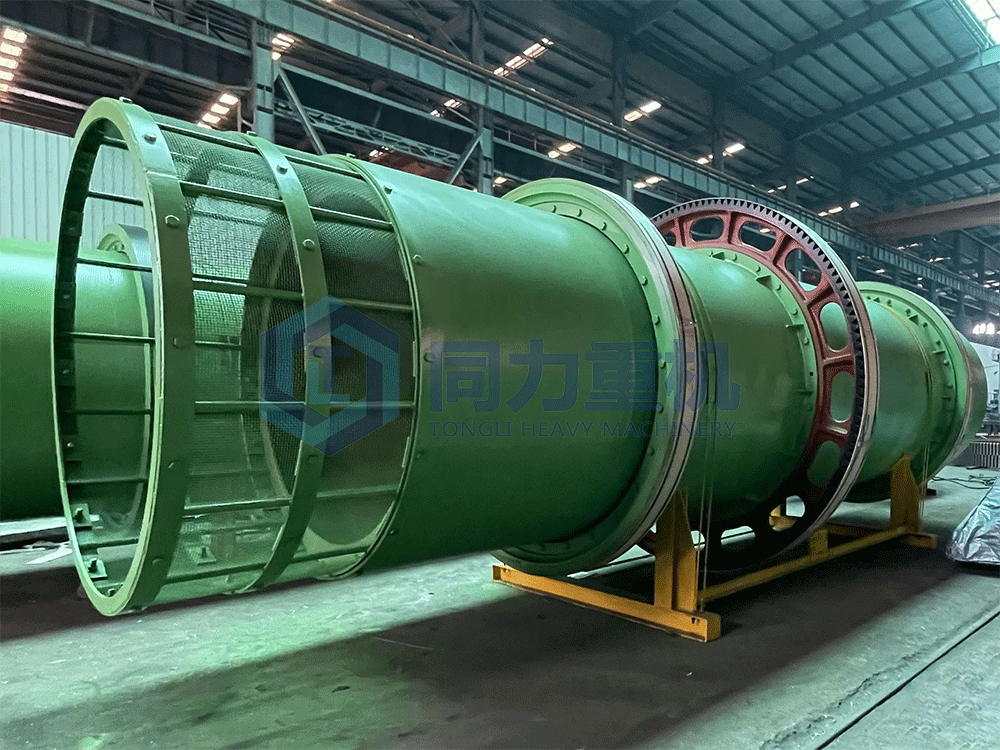Improved Roofing Granule Production through Engineered Equipment
Asphalt shingles have been widely used in the roofing industry as the material of choice for residential roofing in the United States for nearly a century. Its popularity is largely attributed to its affordability, superior durability, ease of maintenance, and wide range of applicability. However, the superior performance of asphalt shingles relies heavily on the roofing granules attached to their surface. The production of high-quality roofing granules relies on advanced and reliable production equipment.

Processing roofing granules
While roofing granules may look similar to ordinary stone, they are actually a highly engineered product that requires a series of complex processing steps to make.
A typical production process for processing raw stone into roofing granules consists of the following key steps:
- Drying: traditional roofing granules are primarily made from igneous rocks, such as granite. After the rock has been mined and crushed at the mine, it is first preliminarily dried using a rotary dryer, with the aim of reducing the moisture content and thus improving the efficiency of subsequent kiln processing.
- Preheating: The dried rock is preheated in the rotary dryer at a low temperature to prepare it for the colouring process. The preheating equipment has a high processing capacity and usually after preheating the line is split into two identical lines to maximise plant capacity.
- Colouring: The preheated material is fed into the rotary coating drum. As the drum rotates, the pigments are evenly sprayed onto the surface of the material and sometimes other additives are added to optimise the product properties.
- High temperature curing: The coated granules are cured at high temperatures in a rotary kiln, where the pigments (and other coatings) are chemically bonded to the rock substrate. This process takes place in a directly heated rotary kiln, where the material is heated to approximately 538°C (~1000°F) and held for a certain period of time to ensure that the desired bond is achieved.
- Cooling: The material from the rotary kiln then enters a cooler and is cooled to approximately 93°C (approx. 200°F), a step designed to prepare the material for subsequent processing and storage while preventing it from sticking.
Rotary drum equipment has become the industry standard for roofing granule production due to its high throughput, rugged construction and long-term reliability. In order to meet the specific needs of roofing granule production, it is particularly critical that the materials used in the equipment are selected to withstand constant heavy loads and wear and tear.

Commonly used equipment for processing roofing granules
Roofing pellets can’t be produced without a variety of state-of-the-art equipment. For example, equipment such as rotary dryers, rotary kilns and rotary drum coatings not only offer high productivity, but are also ruggedly constructed and capable of stable operation over long periods of time. In order to adapt to the high-temperature and high abrasion working environment, the material selection of these equipments is also very careful, usually adopting alloy materials that are resistant to high temperature and abrasion.
By employing these advanced engineering equipment and elaborate production processes, roofing granule producers are able to continually improve the quality of their products to meet the growing demands of the market.
What are the common problems in the production process of roofing granules
Common problems in the production process of roofing granules include the following:
1. Material selection and preparation
Quality of raw materials: the quality of the rock used to produce roofing granules directly affects the performance of the final product. If the raw material contains impurities or uneven particle sizes, this may lead to problems in the production process, such as uneven drying or uneven colouring.
Initial drying: During the initial drying in a rotary dryer, if the drying is not complete, the residual moisture in the rock can affect the subsequent preheating and colouring steps and reduce production efficiency.
2. Preheating and colouring
Uneven preheating: When preheating in a low-temperature direct-fire rotary dryer, if the temperature is not properly controlled, it may lead to uneven preheating of the rock, which may affect the colouring effect.
Uneven colouring: When colouring in the coating drum, if the pigment is not sprayed evenly or the drum rotates at an inappropriate speed, it may lead to uneven colouring on the surface of the particles, which will affect the appearance and performance of the final product.
3. High temperature curing
Inadequate curing: When curing at high temperature in a rotary kiln, if the temperature or holding time is not properly controlled, it may lead to inadequate curing of the coating, which may affect the bonding strength between the pigment and the rock and reduce the durability of the product.
Wear and tear of equipment: rotary kiln operates for a long time under high temperature environment, the equipment is easy to be worn and tear, which requires regular maintenance and replacement of parts, otherwise it will affect the productivity and product quality.
4. Cooling
Uneven cooling: When cooling in a direct heated cooler, if the cooling rate is too fast or too slow, it may result in uneven cooling of the pellets, which may affect subsequent processing and storage.
Material sticking: If the cooling is not adequate and the surface of the pellets remains hot, this may lead to sticking of the pellets during storage, affecting the fluidity and the use of the product.
5. Quality control
Inadequate quality testing: Lack of effective quality testing means during the whole production process may lead to unqualified products entering the market, affecting the company’s reputation and customer satisfaction.
Variations in the production process: Various variations may occur in the production process, such as equipment failure, operational errors, etc., which will affect the consistency and quality of the products.
By optimising the production process, strengthening equipment maintenance and quality control, these common problems can be effectively reduced and the production efficiency and product quality of roofing granules can be improved.

Manufacturer of roofing granule equipment
TONGLI specialises in providing high quality, bespoke, heavy-duty processing equipment for the production of roofing granules. Not only can we supply individual machines, but we can also customise complete line solutions for our customers. This includes:
- Drum dryers: for initial drying and preheating of the material
- Preheaters: to further increase the material temperature in preparation for colouring
- Rotary Coating drums: for uniform coating of pigments and additives
- Rotary kiln: cures the coating at high temperatures
- Rotary Drum Cooler: Controls the cooling process and prevents the material from sticking.
In addition, we also provide auxiliary equipments such as material conveying and storage to ensure the efficient operation of the whole production line.TONGLI has many years of experience in the industry, and can provide customers with all-round technical support from the selection of equipment to the layout of the production line. Our equipment adopts advanced manufacturing technology and high quality wear-resistant materials, which can withstand high temperature, heavy load and abrasion during the production of roof granules to ensure long-term stable operation.

